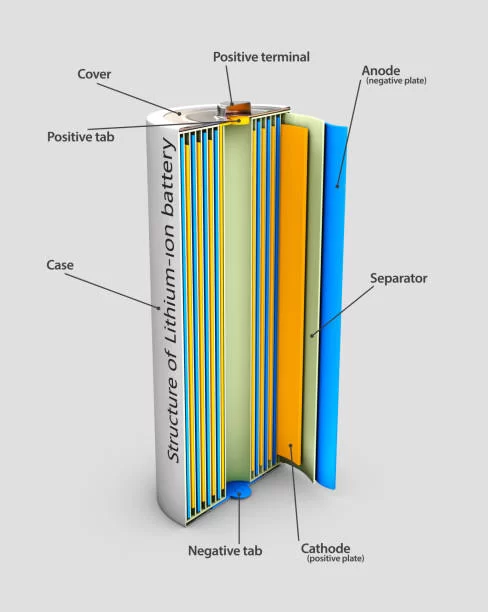A Guide to Understanding Lithium Battery Pricing

If you’ve ever purchased a battery storage system or heard someone remark “the cost of a lithium battery continues to drop,” chances are you wondered: What really dictates lithium battery prices? In this article we demystify what lithium battery prices are, why they differ so much, and how you can know what’s reasonable if you’re purchasing for stationary storage or an electric-vehicle system.
What do we refer to by “Lithium Battery Price”?
The lithium battery price typically refers to cost per kilowatt-hour (kWh) of available power for a pack (cells + electronics + casing) or, less frequently, raw material cost alone. The global average price of lithium-ion battery packs for 2025 has been estimated at around US $151 per kWh.
But that’s a lot of different types—from EV packs to large stationary systems—so when you compare, you have to examine application, chemistry, size and quality.
Why Does Price Differ So Widely?
Main Cost Drivers of a Lithium Battery
These are the main drivers of the cost of a lithium battery:
- Raw material costs: Lithium, cobalt, nickel, manganese and graphite — these are cell cost throughputs. Lithium carbonate fell from ~US $70,000/tonne in past years to less than US $15,000 as of 2024 according to reports.
- Chemistry & cell design:LiFePO₄ (LFP), NMC (nickel-manganese-cobalt), and other designs come at a cost that differ in price, life, safety and performance.
- Scale and technology in manufacturing:More automation, larger gigafactories and improved yields cut cost. Battery pack prices fell 20 % in 2024—the fastest drop since 2017, according to BloombergNEF.
- Application size and type:EV, home storage, grid-scale batteries each have their own cost profiles.
- Certifications and lifecycle requirements:A battery pack that can last for 10,000 cycles or for commercial application will cost more than a consumer model.
- Regional and supply chain factors:Prices are influenced by labor, tariff, raw-material acquisition and logistics regionally.
How Much Variation Are We Talking About?
Here is a simple comparison table of lithium battery cost (2025 estimated) by application:
Application | Typical Cost (USD per kWh) | Notes |
Consumer / portable | ~US $150 per kWh or more | Smaller packs, more costly per unit |
Stationary energy storage | ~US $100-200 per kWh | Larger form, fewer weight/volume demands |
EV battery packs (wholesale) | Below US $100 per kWh (China) | Enormous volume and optimized supply chain |
This gives you an idea of why when someone quotes you a “lithium battery price,” you need to ask: what capacity, what cycles, what application?
Real-World Cases and Trends
Case Study – Stationary Energy Storage in California
In 2023, a Lithium battery system with backup and peak-shaving rating was installed in a Southern California commercial energy-storage project. The system cost approximately US $135 per kWh and had LFP chemistry. With extremely high local electricity prices and time-of-use incentives, payback was expected within less than 8 years.
Global Supply Outlook & Trend
Lithium-ion battery pack costs dropped 20% in 2024—the biggest drop since 2017—as China dropped ~30% year-over-year, the IEA’s Global EV Outlook 2025 reports.
While in the meantime, a supply surplus for lithium in 2025 has been recorded and could temper further cost drops.
These trends suggest: Yes, prices have been dropping—but no, they don’t fall eternally at the same rate. Expect moderation, especially as use becomes more diversified (stationary, EV, grid storage).
What to Ask When You’re Thinking About Buying a Lithium Battery
The below is a checklist to help you concentrate on the right product for your application:
- What does it cost per kWh?Ensure that it’s usable energy, not gross.
- What is cycle life / warranty?A 10,000 cycle-rated battery may be higher initial expense but have lower lifecycle expense.
- What chemistry and manufacturer?Some chemistries are lower expense but will have other trade-offs for safety/performance.
- Is the battery appropriate for your application?Stationary applications have varying requirements than mobility applications.
- What are total cost of ownership and payback?Don’t look only at price—look at energy savings, maintenance, replacements.
Frequently Asked Questions that Homeowners or Buyers Have
Q: A lithium battery for my solar system costs more than the quoted average per kWh. Why is that?
Because the average might be calculated on the big picture. Smaller units (residential scale) cost more per-kWh due to lesser scale, more packaging, and certifications.
Q: If raw material prices drop, will the prices of batteries continue to plummet?
Not necessarily. Total cost is all raw material. Manufacturing, logistics, lifecycle warranties, and demand growth all play their part.
Q: Is it wiser to wait until battery prices fall further before buying?
It depends on your application. If your system is saving you more money (through self-consumption, backup power) now, waiting may be costing you more in lost benefit than price drops.
When you hear “lithium battery price,” think: capacity, cycles, chemistry, application, scale. Prices vary widely and what matters isn’t merely the first $/kWh—but the fit to your application, the lifecycle cost, and the support behind that battery.
